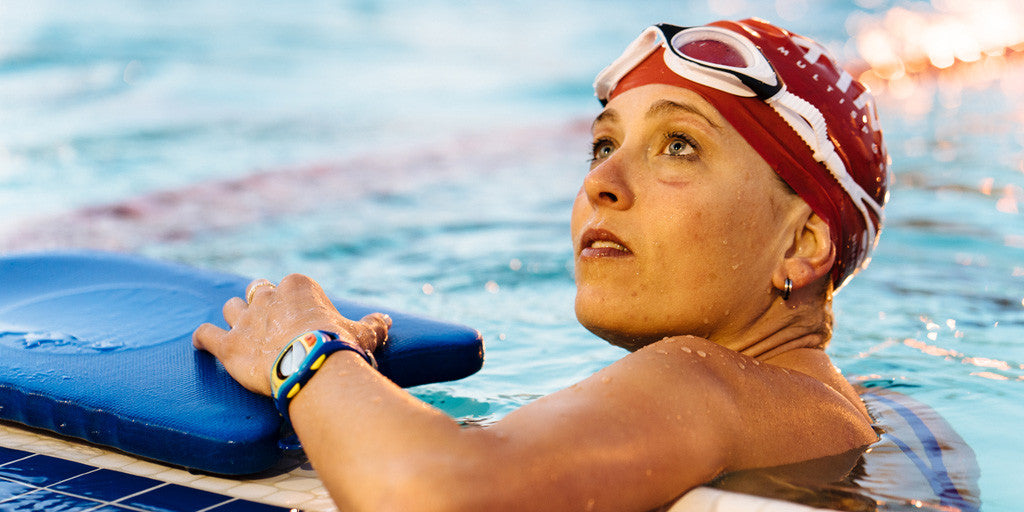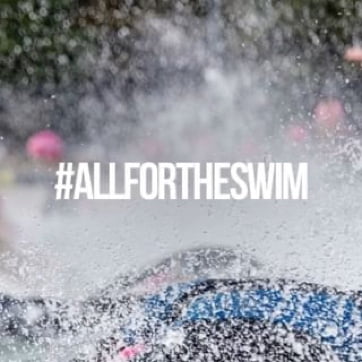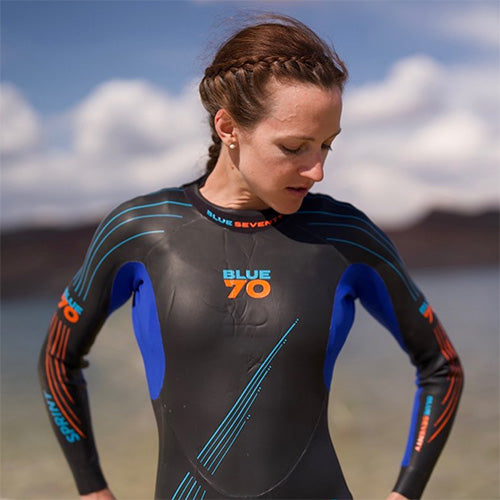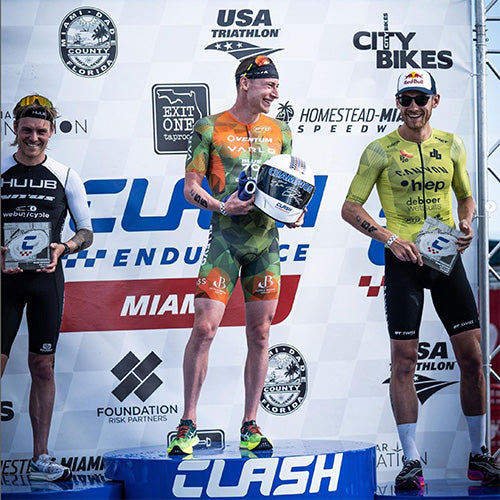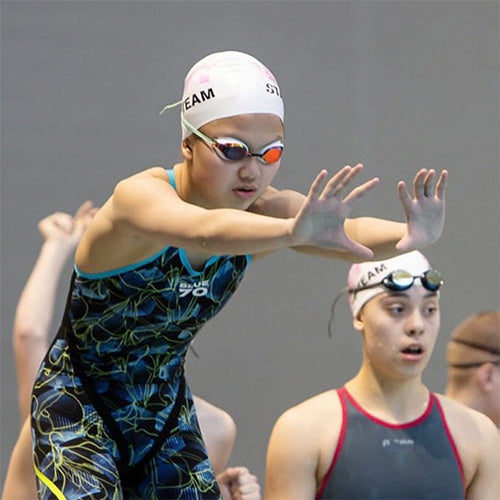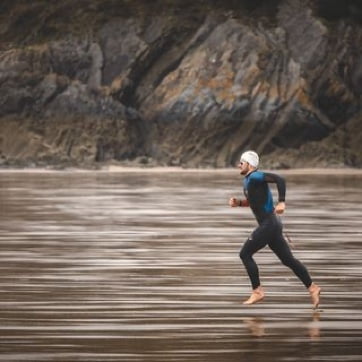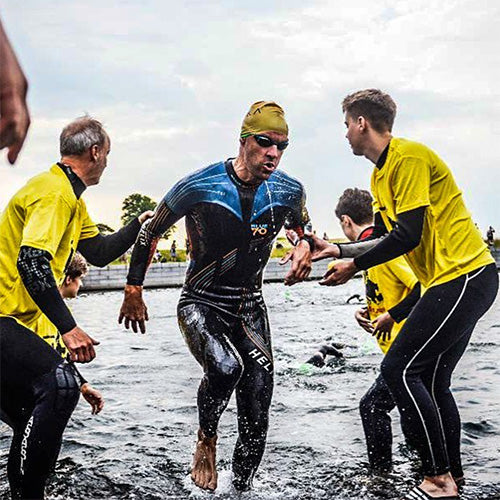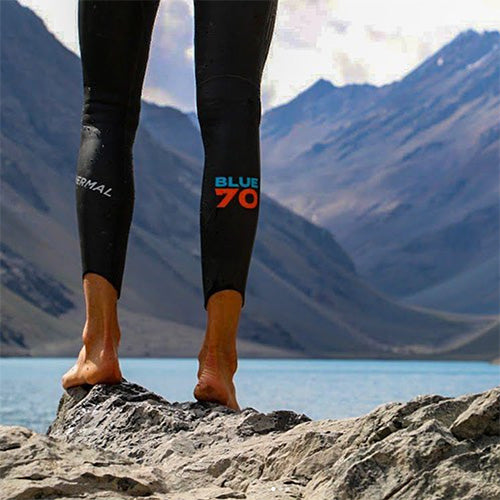In the previous post we examined how swimming more efficiently takes technique. Once you reach a certain level of proficiency though, training methodology leads to further gains. Performing each swim at the same pace will NOT lead to improvement. Instead, swim like a swimmer. Add intervals and preset rest periods or “send-offs.” An example of a send-off would be 5 x 100’s on 1:45. This means you would swim a series of five 100’s and you would leave the wall for a new one each minute and forty-five seconds. If 100 takes you 1:30 then you would get 15 seconds rest before beginning the next repeat.
Let’s say we have a swimmer doing a training session of 1,000 yards in a time of 22:30 which equates to a 100 pace of 2:15. A different and better way of training would be to create a set where the pace is faster than 2:15/100. As an example, we could break the same 1,000 yards into the following workout:
Warm Up: 300 yards including 100 yards of drills specific to the athlete’s needs of improvement.
Main Set:
6 x 50 yards at 2:00-2:05 / 100 pace. Rest :20 sec between repeats
2 x 100 yards at 2:05-2:10 / 100 pace. Rest :15 sec between repeats.
Cool Down: 200 yards easy
Half of this workout is at a faster pace than the athlete typically swims. The athlete’s body and mind will need to adapt to get through the water more efficiently by reducing drag and by improving technique. Of course, the athlete can swim a little faster than normal by exerting more effort. Even this is an advantage over always swimming the same pace straight through. The human body adapts to training stress placed upon it, given it is an appropriate amount of stress. In a few weeks the same swimmer will now be consistently swimming at a pace that is faster than their previous 2:15/100 pace. Improving one’s 100 yard pace by 5 seconds per 100 yards will yield a 2 minute 16 second improvement off their Olympic Distance swim.

One of the most common complaints beginner swimmers say is that swim training is boring. Of course, swimming can be boring when every swim session is the same! However, when an athlete does a “swim workout” it requires concentration and focus which creates engagement of the brain. When completing swim workouts the time appears to go by much quicker in the water.
When taking swimming to the open water it has been known to induce a panic attack or two. Lakes and oceans are not always clean and clear. You no longer have a black line to guide you. Practicing in open water will build confidence and reduce stress. The more swim confidence a person has, the less they are freaked out by contact and the more skilled they are at avoiding contact by being able to swim away from it. Panic attacks happen at a much greater rate to less confident swimmers than to more confident swimmers.
Transferring pool performance to the open water can be a difficult task. You can make this easier by practicing a lot of the open-water specific drills in the pool: Sighting, drafting, swimming in close proximity to others or even buoy turns can all be added to your regular pool swimming routine. With every rep you do, remind yourself to do at least one head up stroke or a sighting breath every other length.
When racing it is unlikely you will ever find perfectly clear water with no other swimmers around you, so the next best thing is to prepare yourself for the inevitable. If you do this, you’ll be way ahead of the other swimmers in terms of confidence. - Simon Ward, winner of multiple coaching awards and owner of UK based The Triathlon Coach
One key to improving confidence is to improve competency or ability. When you notice an improvement of your 100 pace, your confidence improves. In addition to improved confidence, you will be more excited to train when they notice improvement. With each increased bump in confidence in one’s swimming ability the idea of a mass swim becomes less intimidating. Talk to any group of beginner triathletes and typically the number one fear expressed is the swim portion of a race. Athletes are worried about contact from other swimmers as well as water conditions: cold temperatures, rough water and waves, etc. The higher swim confidence a triathlete has the less they are concerned about the swim leg. The opposite is true for those with the lowest levels of swim confidence. More than one triathlete can tell you a story of hanging on to the side of a paddle board or kayak for several minutes during a race while they recover from a panic attack. The bottom line is an improvement in your swim confidence will result in a more favorable race experience.

Triathlon coach Lance Carter contributed to this story. Carter is a 9-time IRONMAN finisher who has been training and racing since 1993 and coaching athletes since 1997. He is a long-time blueseventy ambassador. His personal mission is "to inspire people to live more fulfilling lives through exercise and mindset elevation." His book 100 Lessons for Essential Training and Racing was published in 2016.


